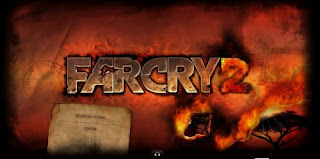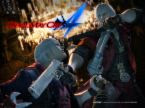
Too Human tries its hand at all of these elements and succeeds only in proving the old adage that 'more' doesn't necessarily equate to 'better'. There are more outside influences in Too Human's final design than original thoughts; the culmination of more than a decade of on-off development is the clear culprit here.
Silicon Knights' repeatedly delayed, reworked and arguably overhyped release is, in a word, harmless. It won't move you with its writing; it won't impress you with the latest, greatest graphics; it might not even compel you to finish the adventure if you're not immediately taken with the gameplay. It doesn't push the envelope as much as it pretends to on the surface.
What Too Human will do is serve to remind you that, even in a market flooded with dystopian adventures, moralistic epics, mini-game compilations, formalist Japanese turn-based RPGs, World War X shooters and hardcore sports simulations, sometimes the genius is in choosing the right niche, sticking with it to the end and getting it right the first time.
The story is a strange journey – and being the first instalment of a planned trilogy of games, it's also noticeably incomplete. The hero, Baldur, is a member of the Aesir gods, who have sided with humanity in the long-running battle against sentient machines. Superficially, your quest is to wage war and hunt down GRNDL-1, a rogue machine, but this eventually gives way to a more conspiratorial story of gods-against-gods and the implications of overreliance on technology.
At all times, you get the feeling Silicon Knights is holding back. You're tossed into a conflict that your grunt-fodder allies are quick to point out that they don't understand – and neither do we, really. There's a fair amount of exposition between missions that starts to stitch together Baldur's strange memories and weaves them into the rest of the story. The Norse mythological slant is curious more for how incongruous it is against the cybernetic technology than anything; the whole game could've easily excised the Norse component and gone for an original race or sect to the same end.
Baldur isn't the most layered character we've played with in a while, either. He seems motivated by short-spurt bouts of aggression that are perfect for setting the scene for the game's relentless brawling, but are silly enough in the context of the story that they can be easily picked as red herrings or distractions, while the real threat is heavily hinted at to the player. Is that to say the story is a stinker? Not really – it's just painfully hard to follow in one moment and then equally transparent in others. You'll be able to pick the villains, the love interests and the show-ponies from their character design – even before they open their digital mouths.
We knew this was never going to be in the leagues of high-cinema storytelling, but the voice-acting is, at times, genuinely sub-par. The quality of the dialogue ranges from clever asides to daytime tele-movie exposition, espousing lines that you've heard appropriated a hundred times before. Watching Baldur smoulder quietly and reject the obvious advances of a certain female character has all the emotional weight of a Big Brother daily update………………………









